This Rabokki recipe is based on the popular Korean street food dish that combines ramen noodles and tteokbokki (spicy rice cakes) with a delicious sweet and spicy sauce. This dish has now gained popularity worldwide, and it's easy to see why— it's inexpensive, quick to make, and absolutely delicious. Below I show you how to make rabokki at home in just 20 minutes!
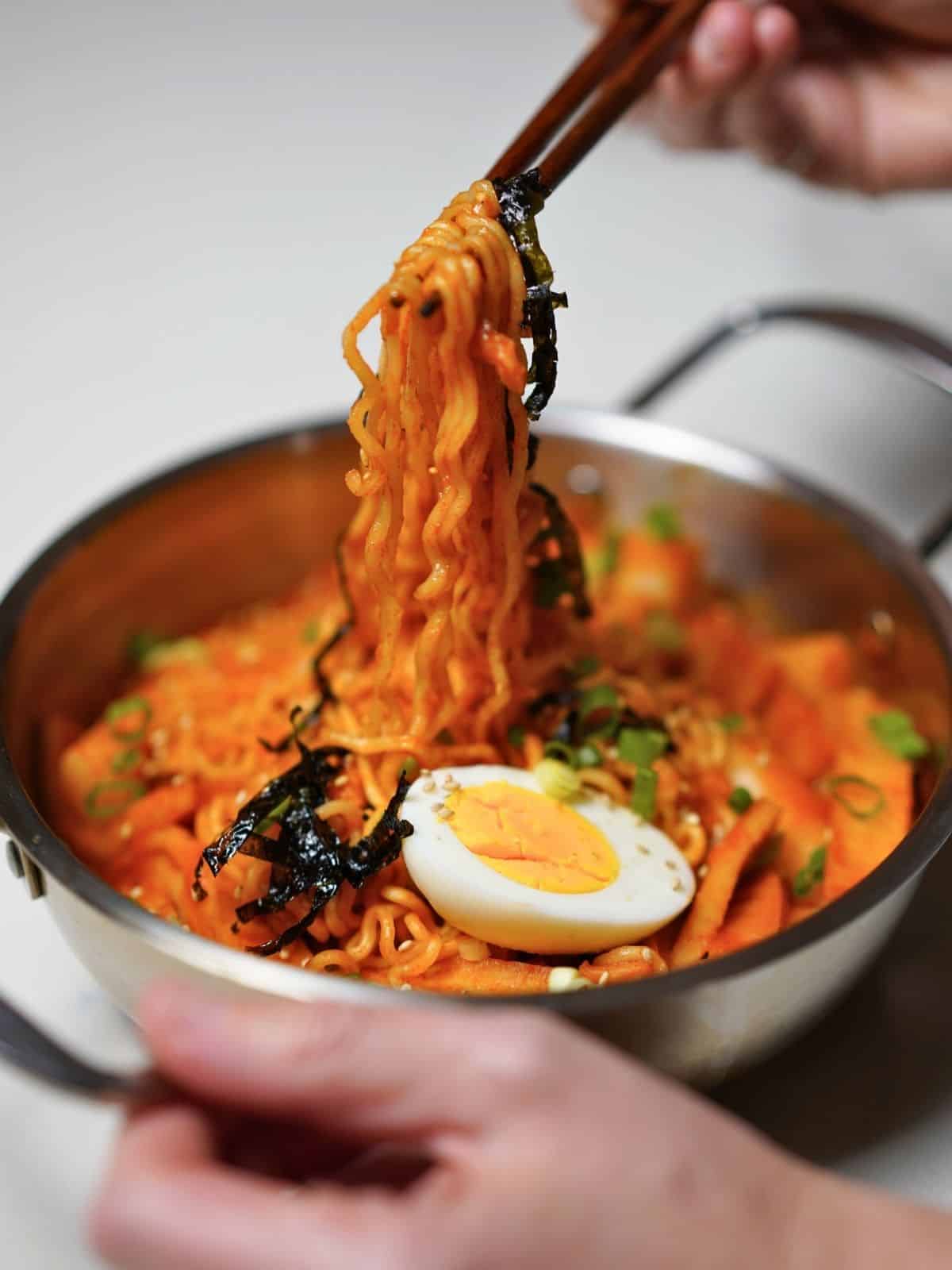
Jump to:
✔️ Why This Recipe is Great
Easy to Make: Rabokki is relatively easy to make at home with simple ingredients that can be found in most grocery stores, and are abundantly found in HMarts across the world.
Versatile: This dish is highly customizable, meaning you can add or substitute ingredients to your liking. Whether you prefer a spicier or milder flavor, gluten-free ingredients, more vegetables or less, there are endless possibilities for making this ramen ddeokbokki recipe your own.
Budget-Friendly: Rabokki is an affordable meal option that won't break the bank - the main ingredients are inexpensive items that can be bought in bulk at most stores, and tend to keep for a long time in the fridge and in the pantry.
🥚 Ingredients
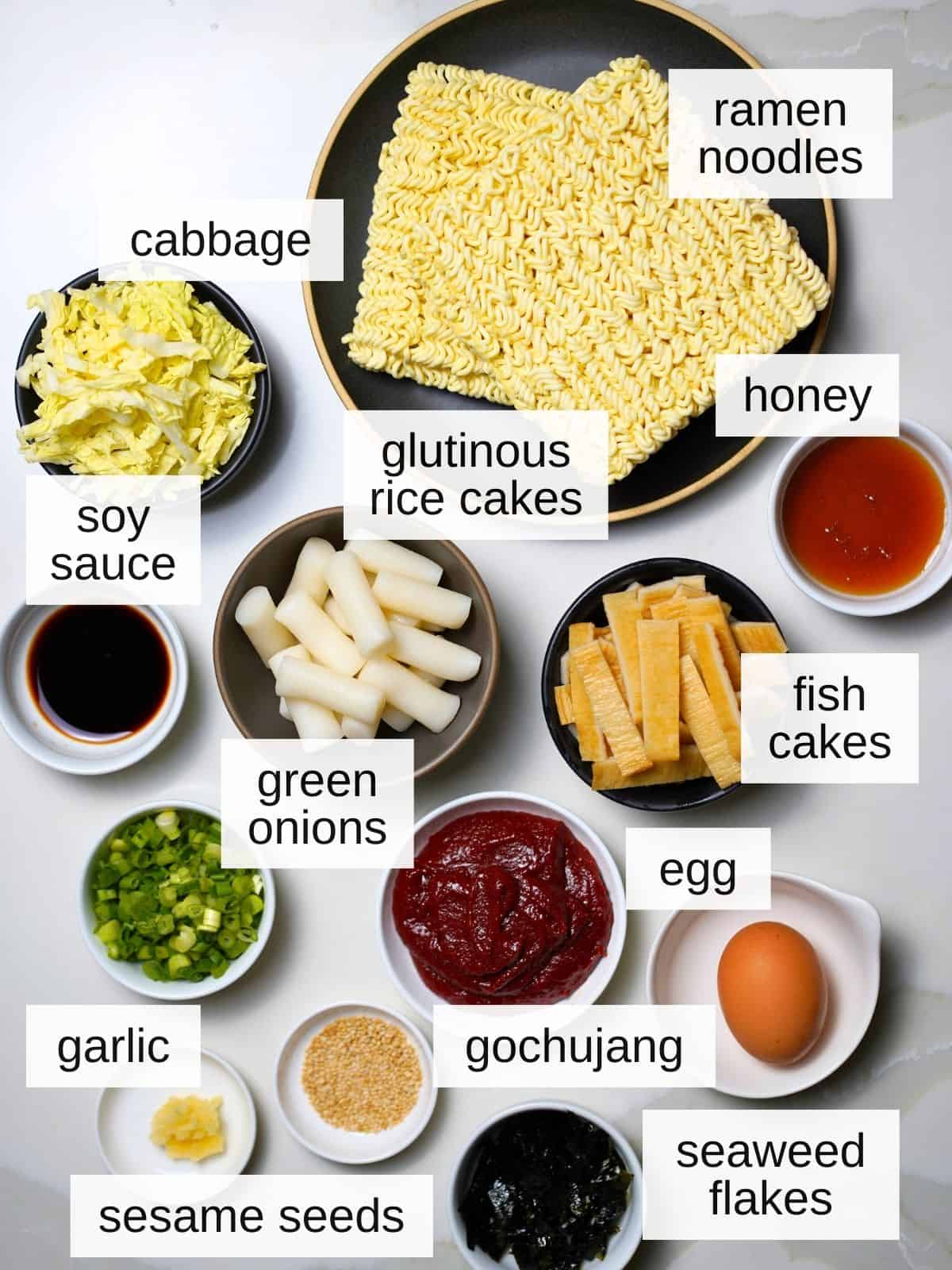
Ddeok: This is the star ingredient of rabokki. It's important to soak your tteok well in water for 10 minutes to get the chewy texture.
Instant Ramen Noodles: You will only need the noodles from the instant ramen packet, so feel free to save the seasoning for another dish or even another larger batch of Korean ramyeon.
Water: To cook the noodles and create the sauce; you can use broth for extra flavor.
Gochujang: a Korean red chili paste that adds a spicy, sweet, and savory flavor to the dish. This is generally quite spicy, so adjust the amount to your taste.
Honey: for a touch of sweetness to balance out the spiciness; opt for brown rice syrup for a more traditional vegan alternative.
Soy Sauce: for extra umami flavor and a touch of saltiness; you could use tamari or coconut aminos if you have a sensitivity.
Cloves of Garlic: this adds a delicious garlicky flavor to the dish. To peel them easily, crush them with the flat side of a knife and the skin will come off easily.
Cabbage: you can cut the heat into thin slices or chop them up, depending on your preference; I like buying a cole slaw mix for a quick pre-chopped version.
Precooked Fish Cakes: these can usually be found in the frozen section of Asian grocery stores. They add a nice texture and flavor to the dish, but are ultimately optional.
Whole Green Onions: both for garnish and added flavor; technically optional, but highly recommended.
See recipe card for exact ingredients and quantities.
🍜 How to Make Rabokki (Step-by-Step)
Step 1) Begin by soaking the rice cakes in warm water if they're hard, for about 10 minutes (image 1).
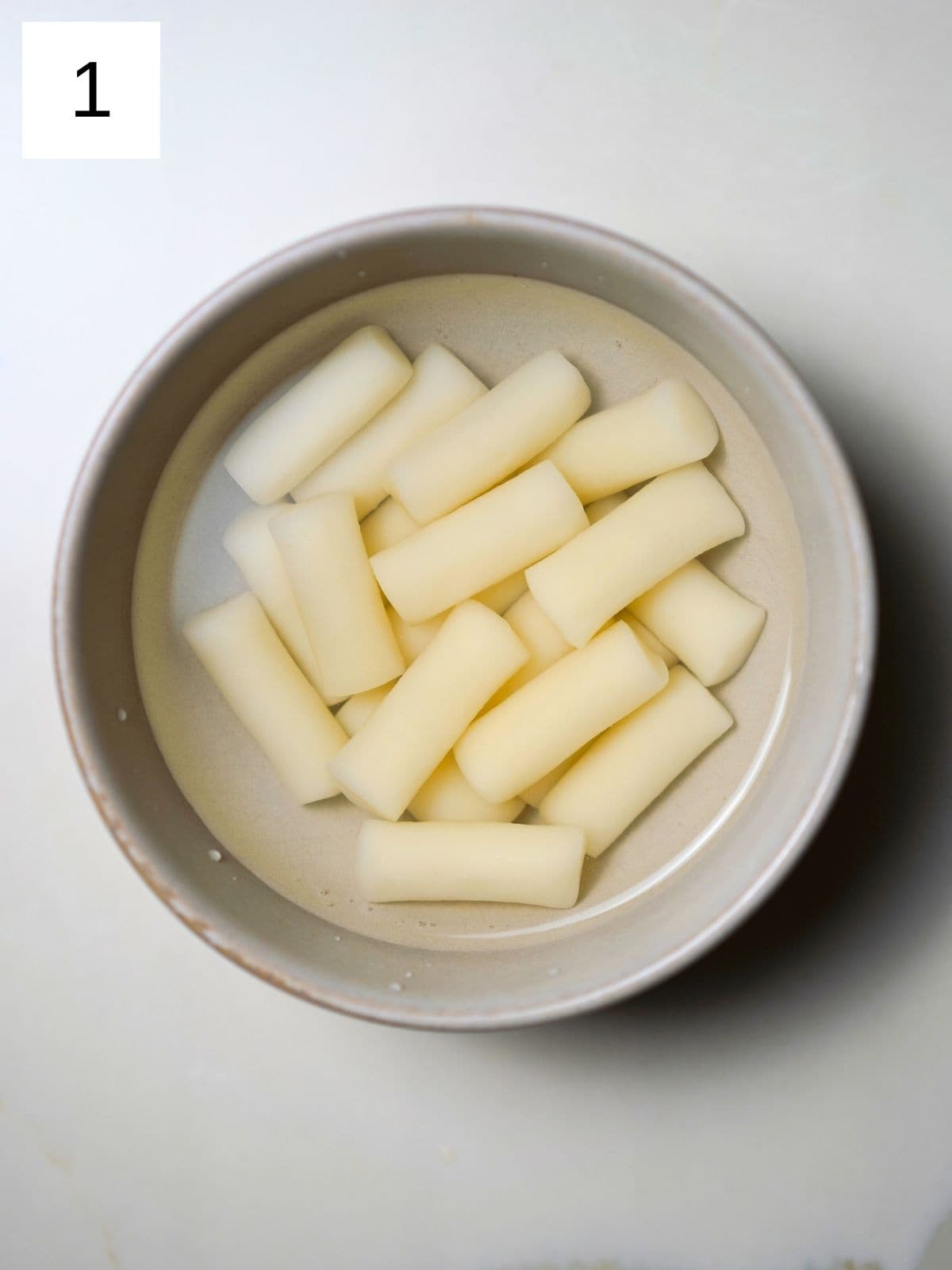
Step 2) Meanwhile, in a large pan or wok, bring your 4 cups of water or broth to a boil. You’ll be cooking everything in the same pot, but don’t worry; it will reduce by a lot.
Once your liquid is boiling, stir in the gochujang, honey, soy sauce, and garlic, whisking until smoothly combined (images 2-7).
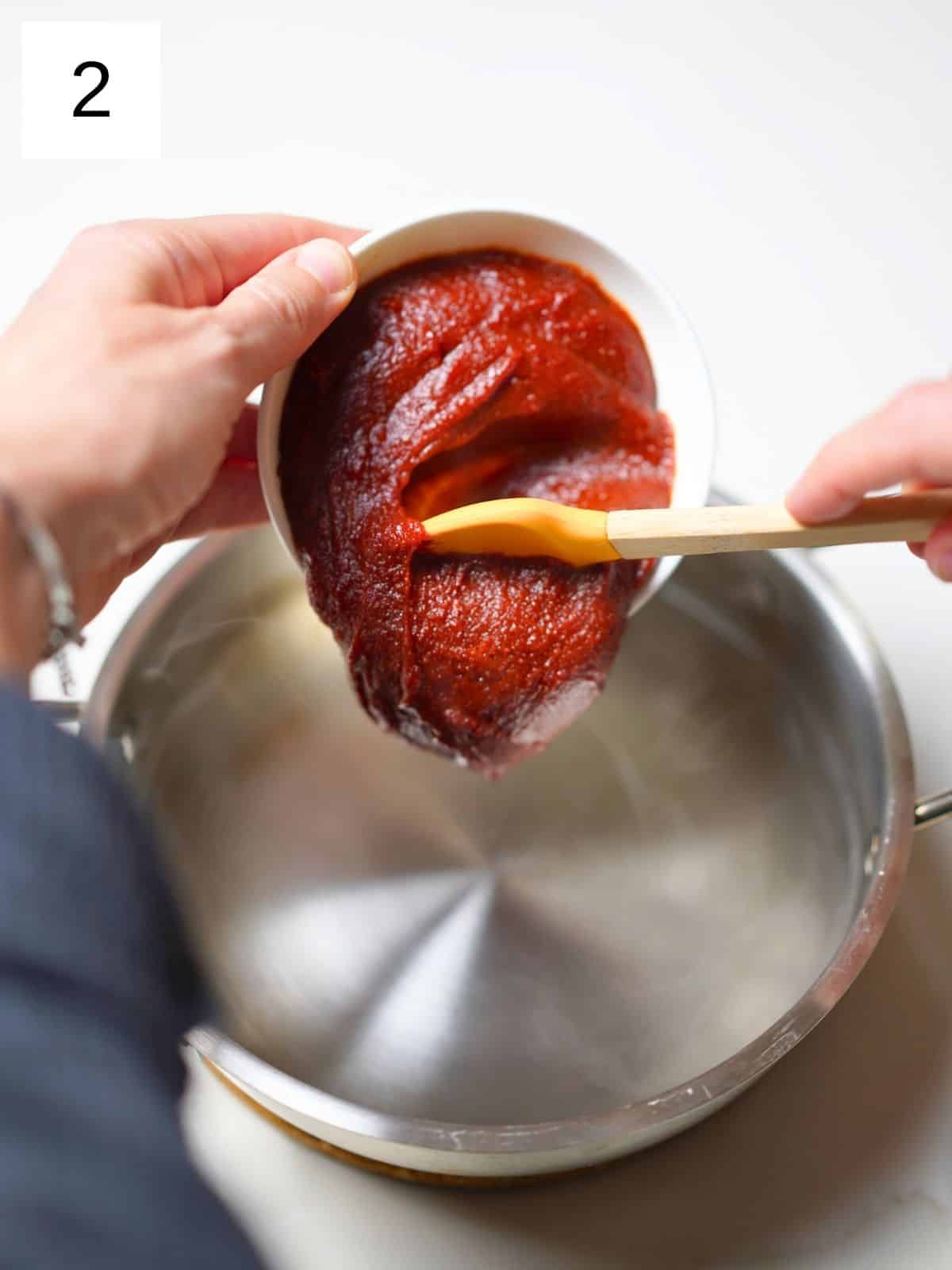
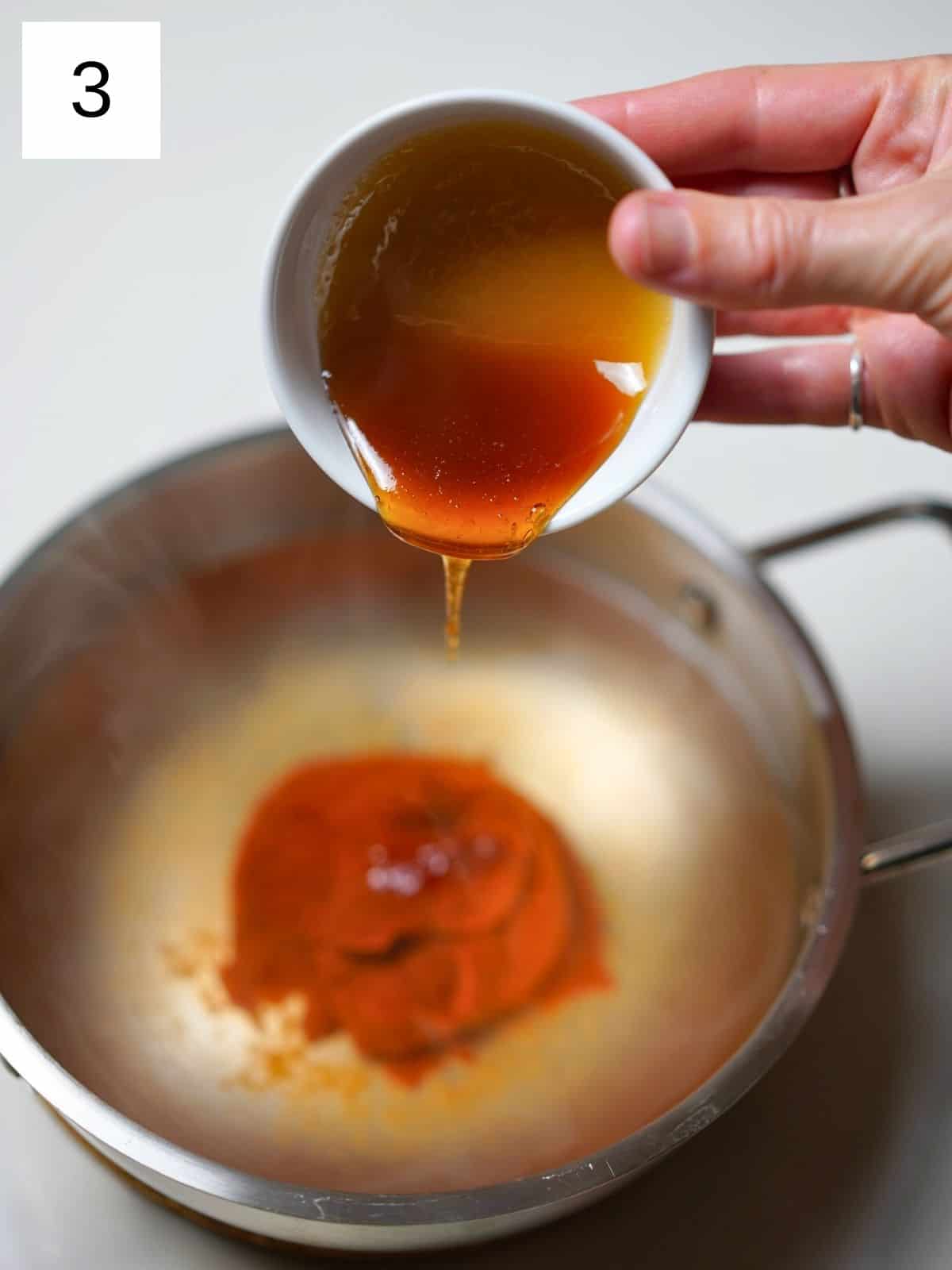
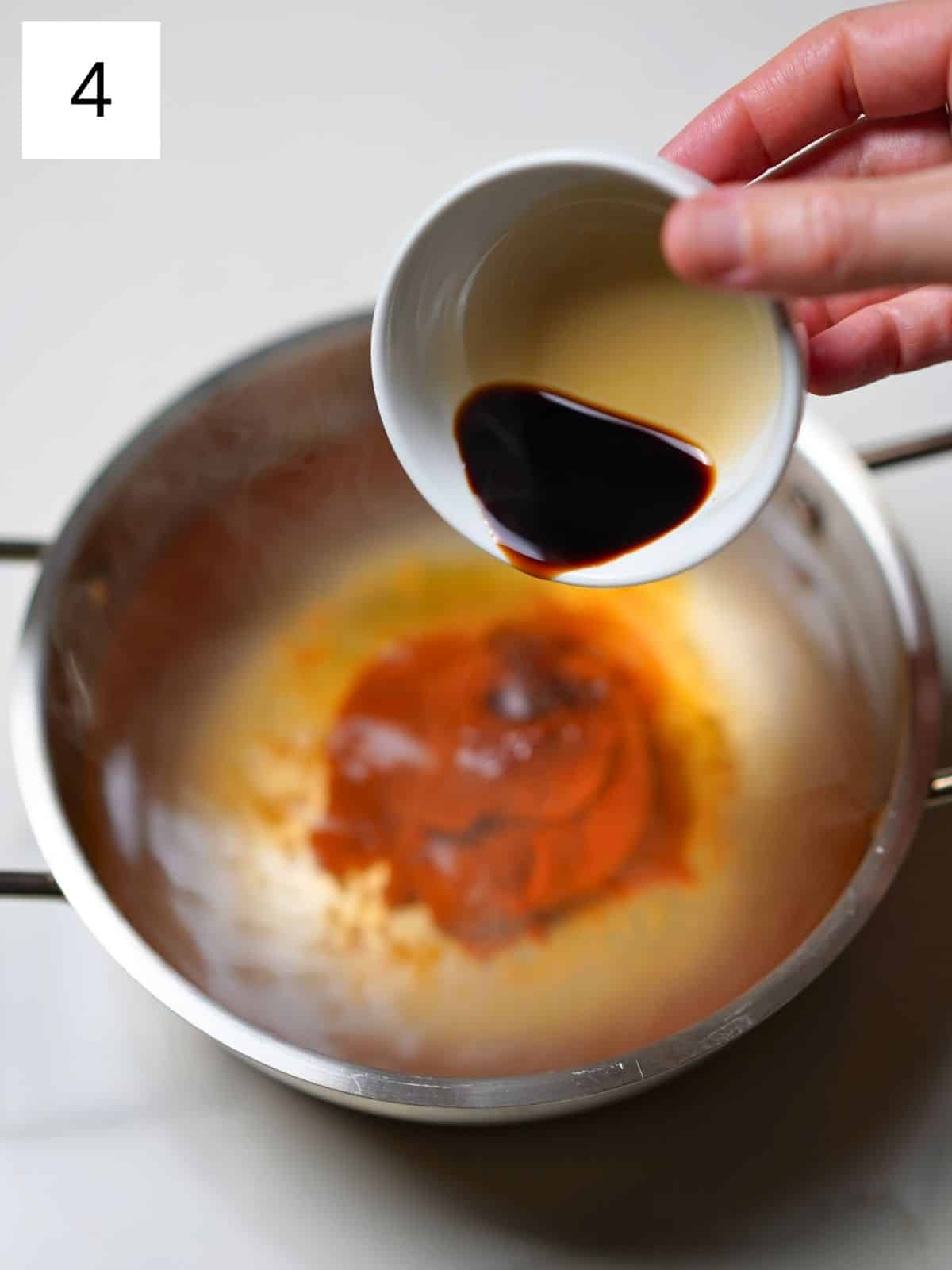
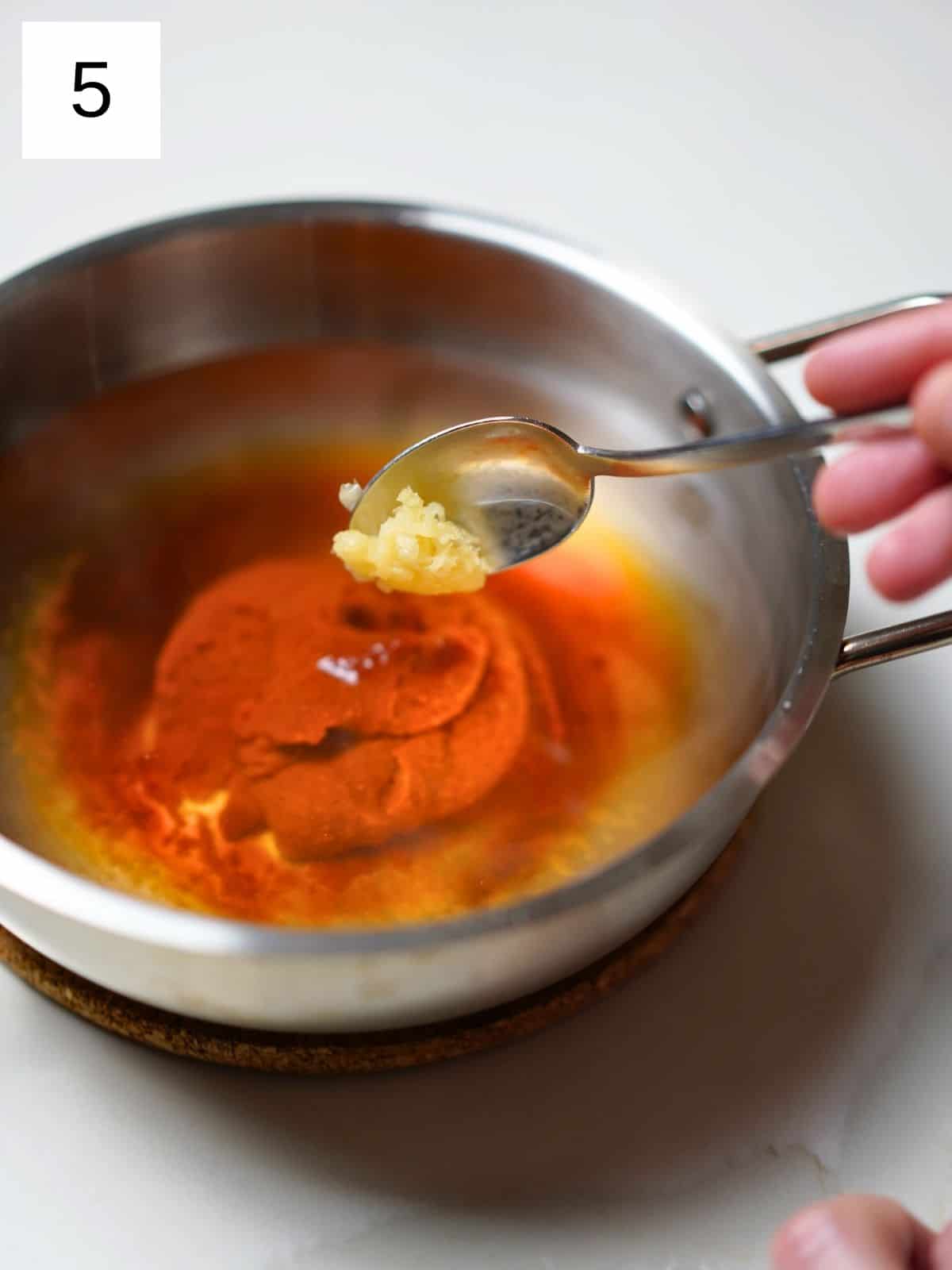
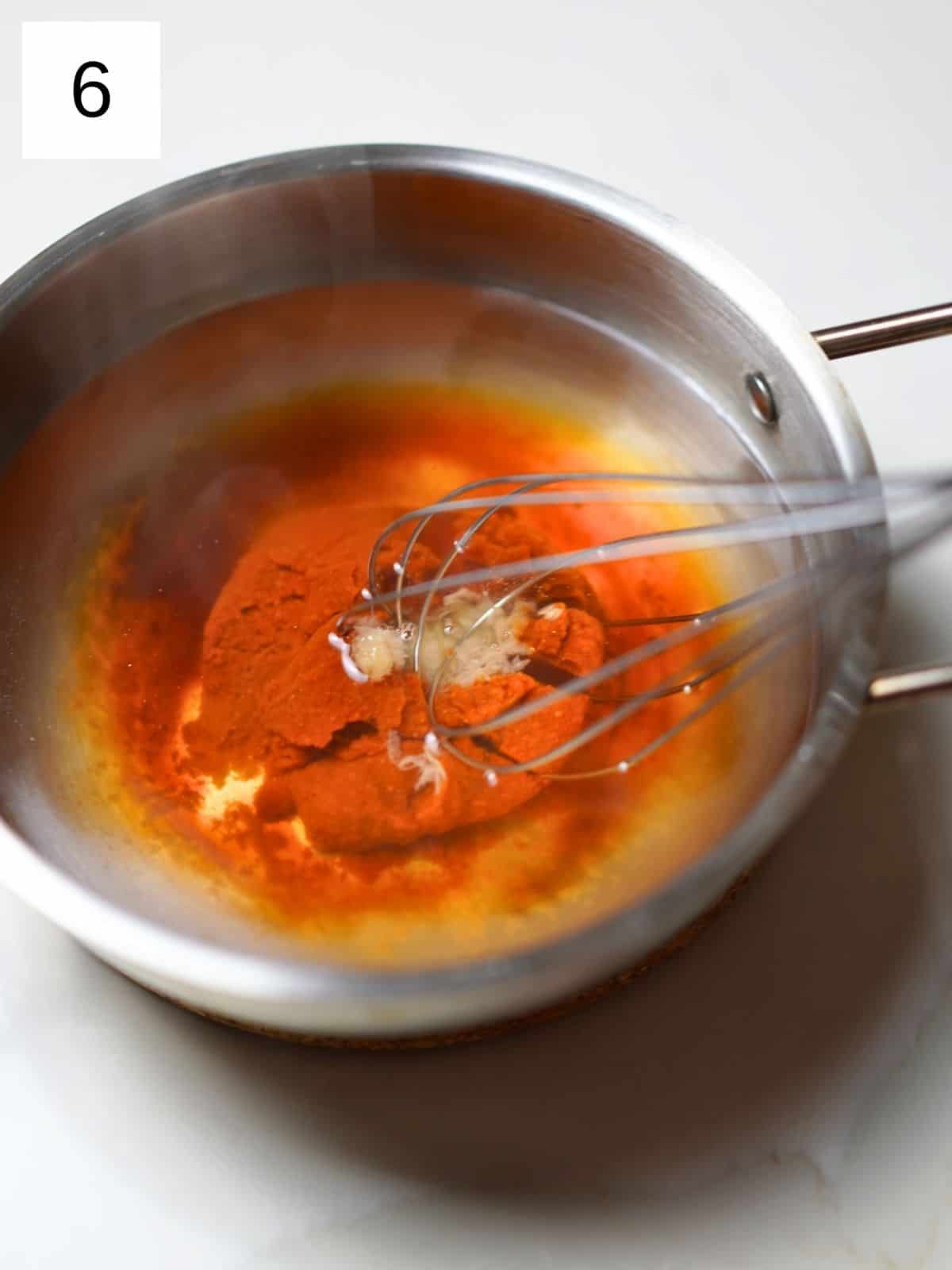
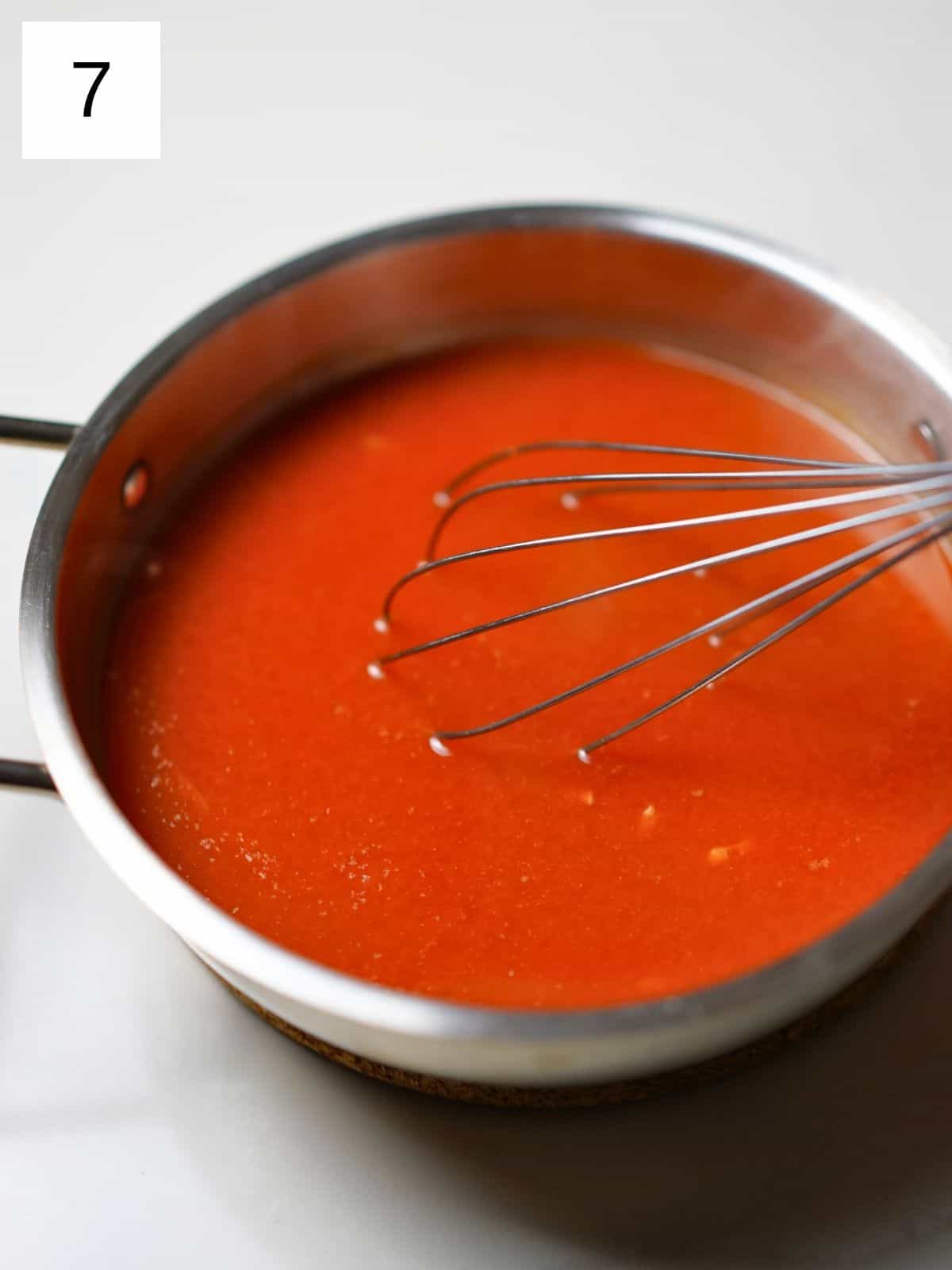
Step 3) Add the sliced cabbage, and then drain & add the soaked rice cakes & fish cakes to the sauce, simmering until they start to soften (about 5-7 minutes), stirring occasionally (images 8-11).
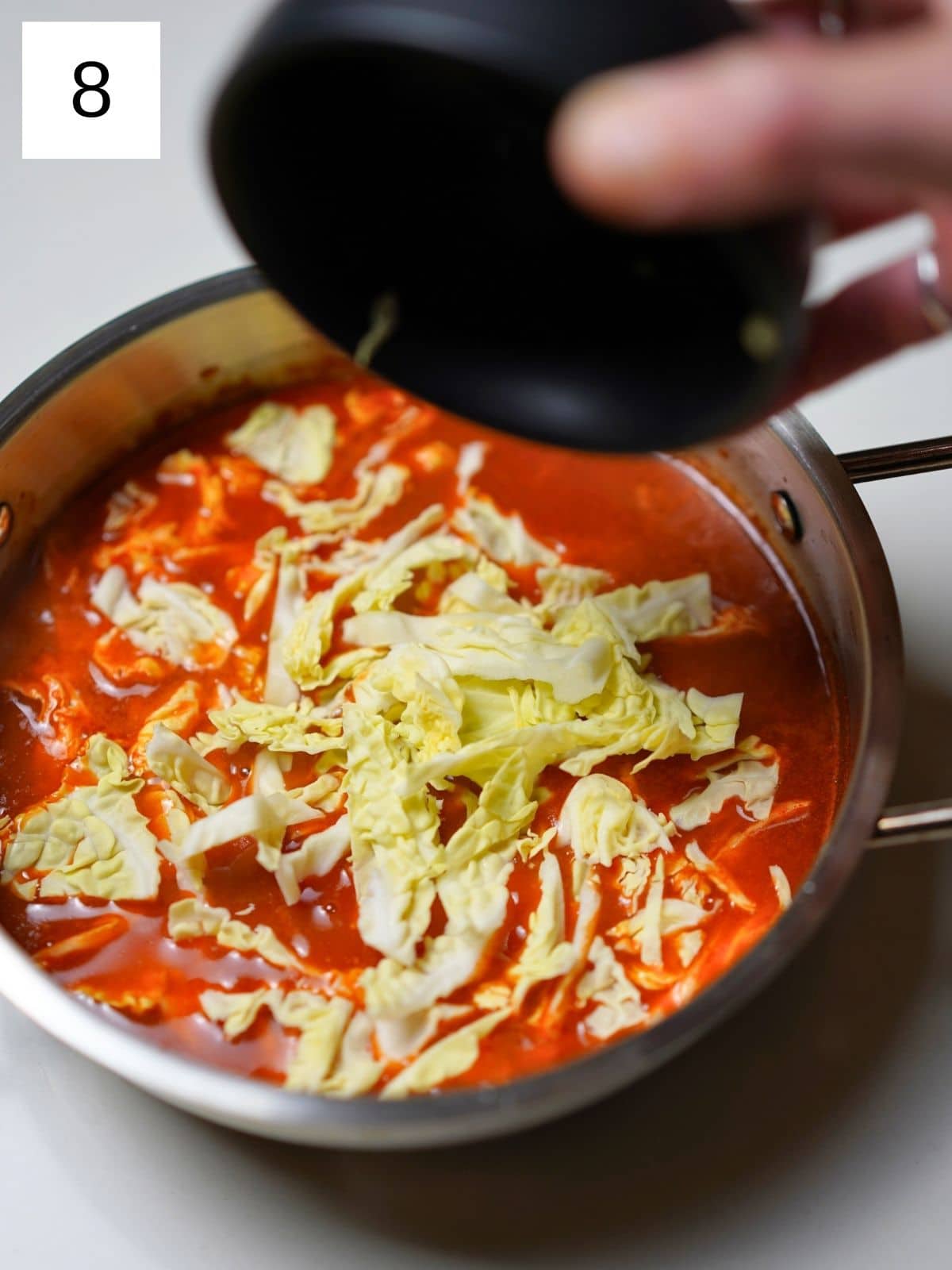
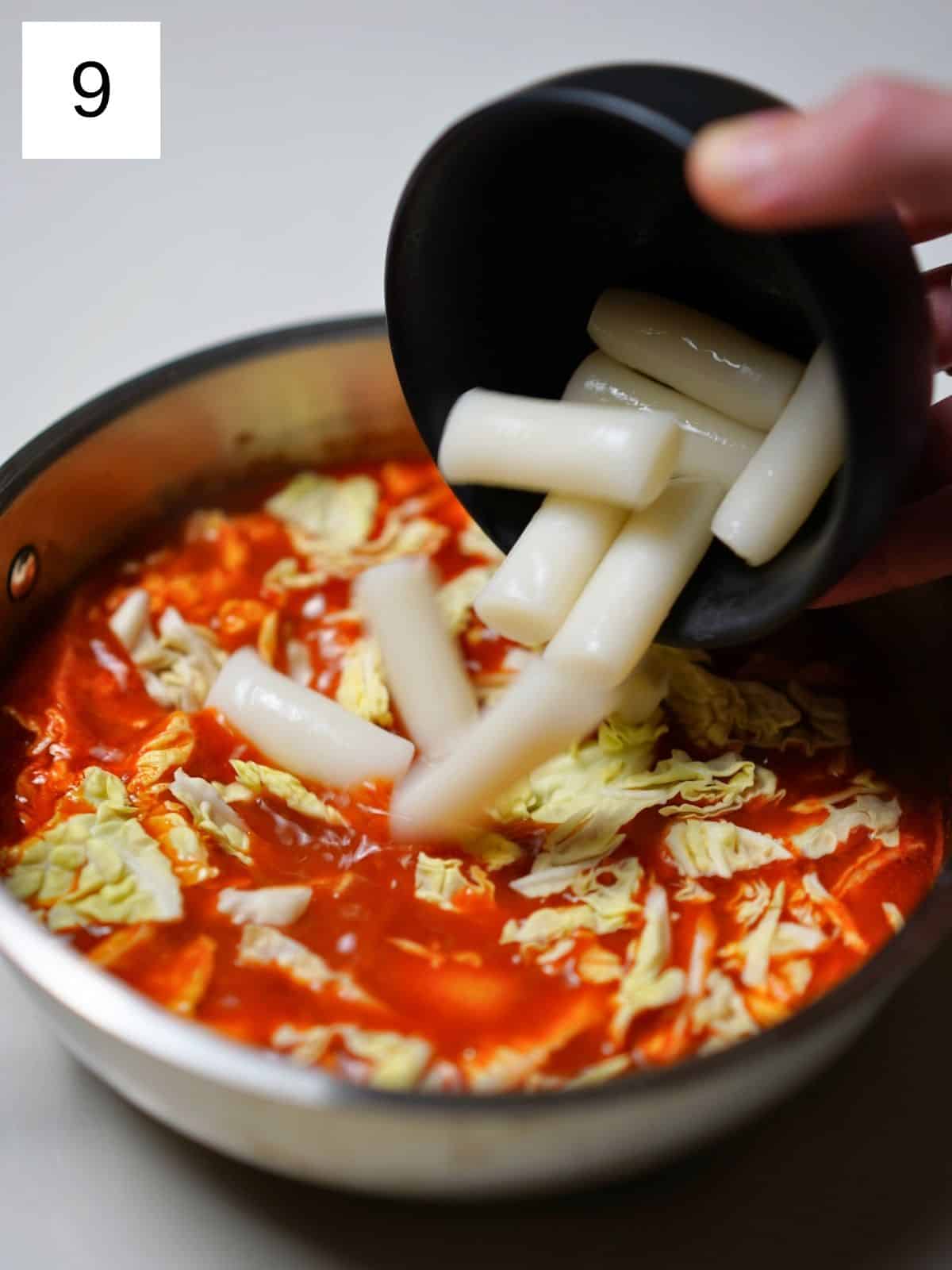
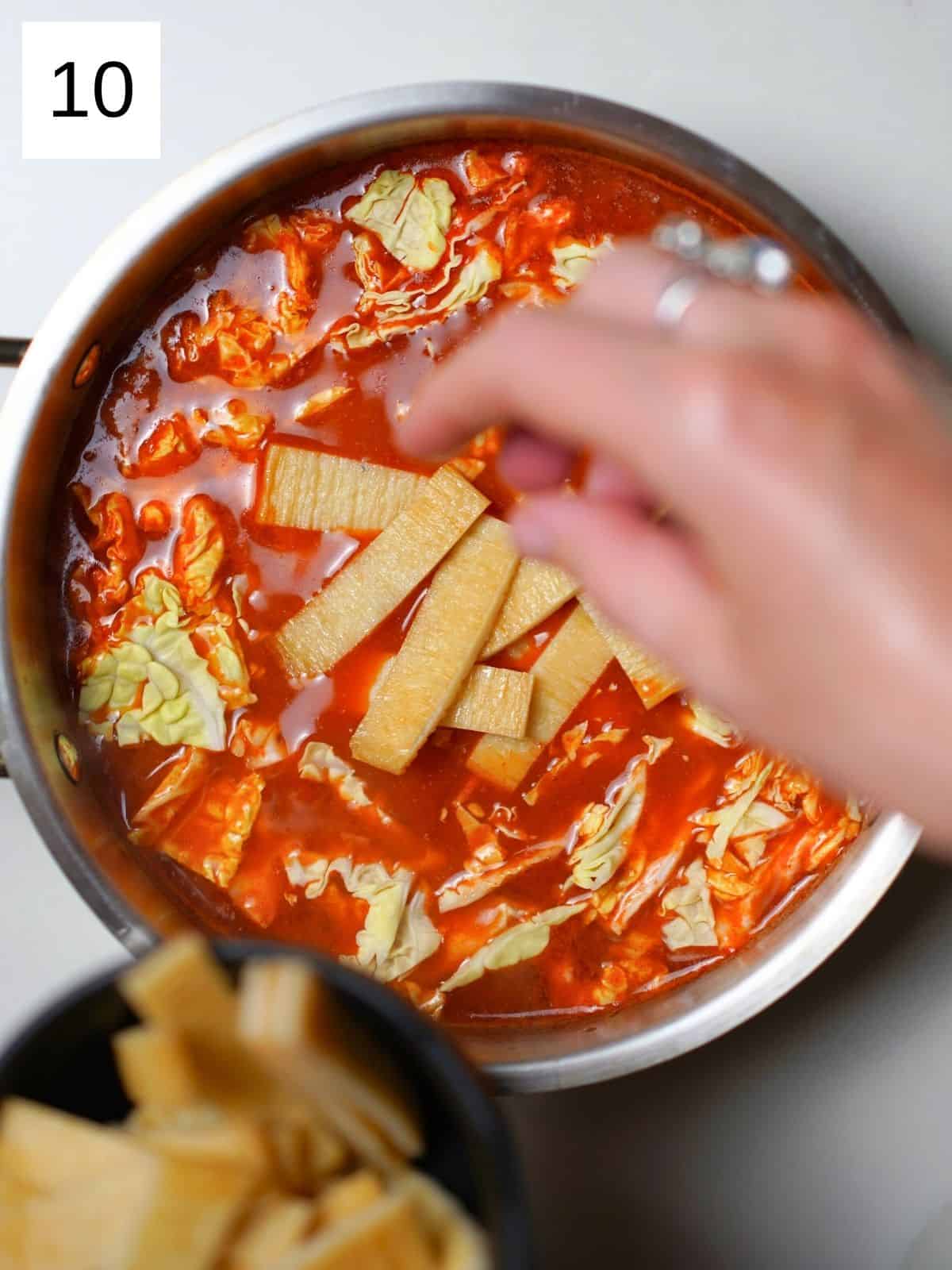
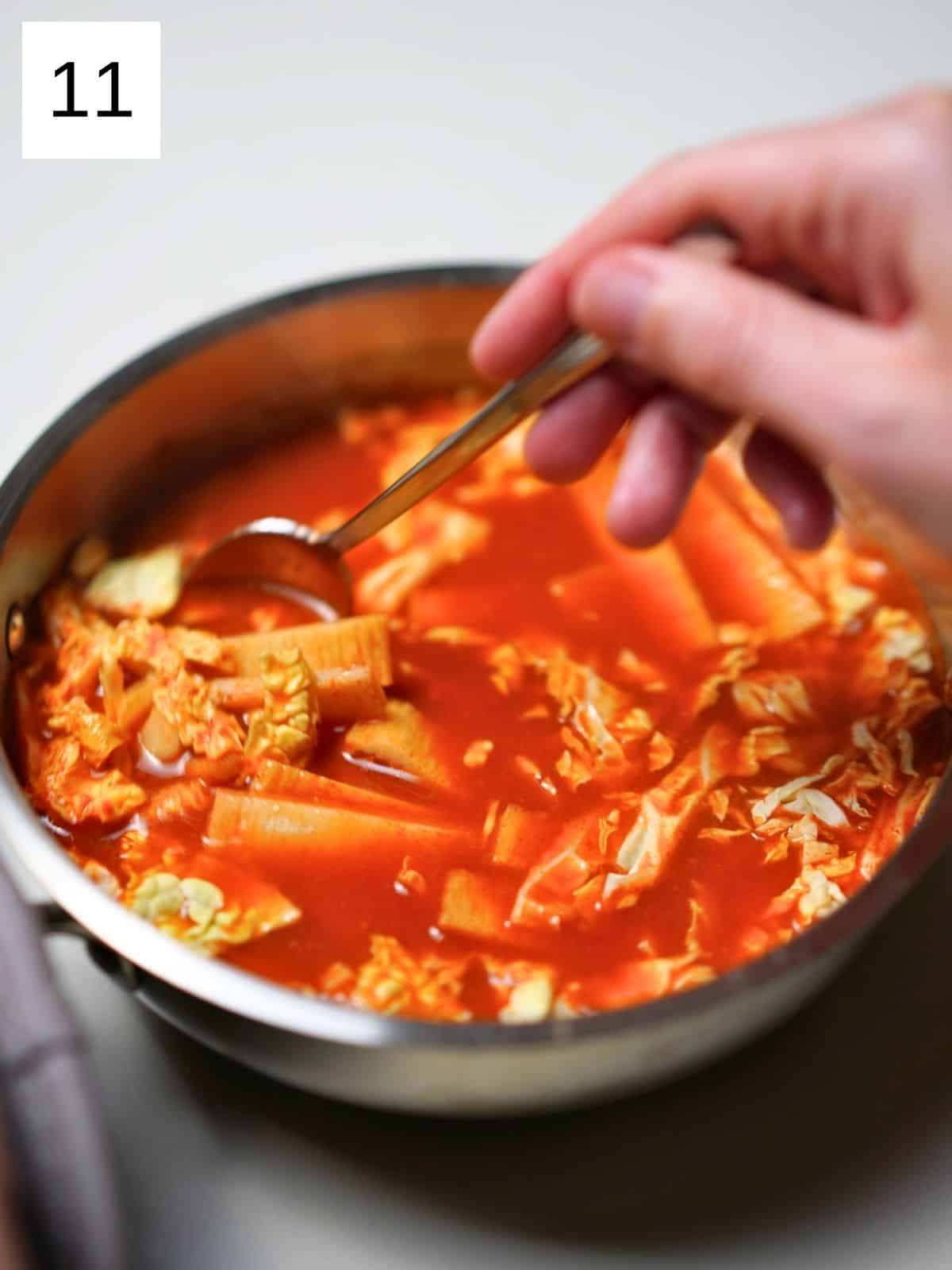
Step 4) Once the rice cakes and fish cakes have softened, add the uncooked ramen noodles (set aside or toss the seasoning packet) and cook for 3-5 more minutes, opting for less time if you prefer your noodles al dente (image 12).
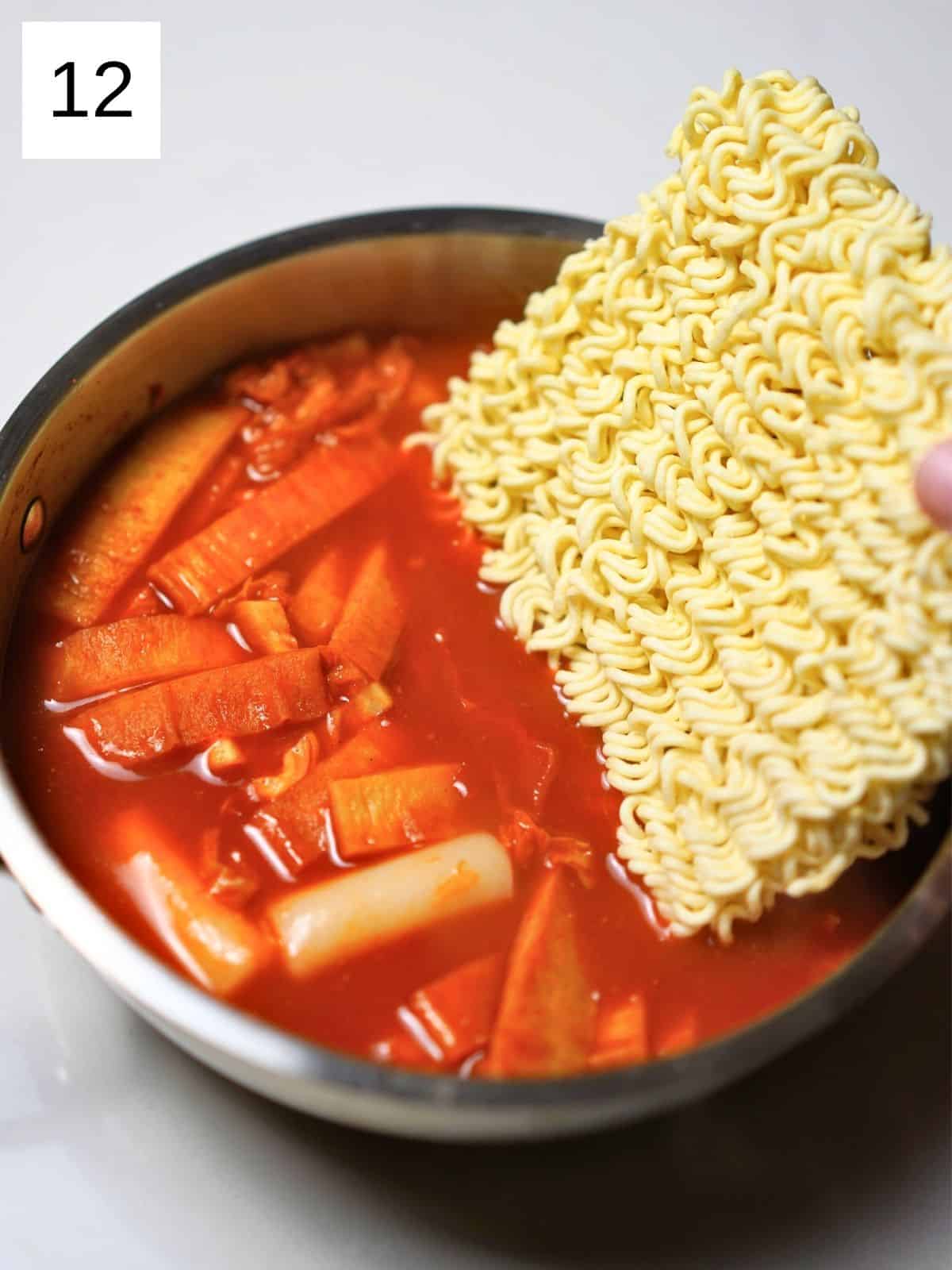
Step 5) Once the rice cakes are tender and the sauce has thickened, add the chopped green onions to the pan and toss everything together to coat it in the sauce.
If you're feeling indulgent, you can sprinkle mozzarella cheese over the top and cover the pan for a minute to let it melt. If not, serve your rabokki hot, ideally garnished with boiled egg halves, a sprinkle of sesame seeds, and seaweed flakes (images 13 & 14).
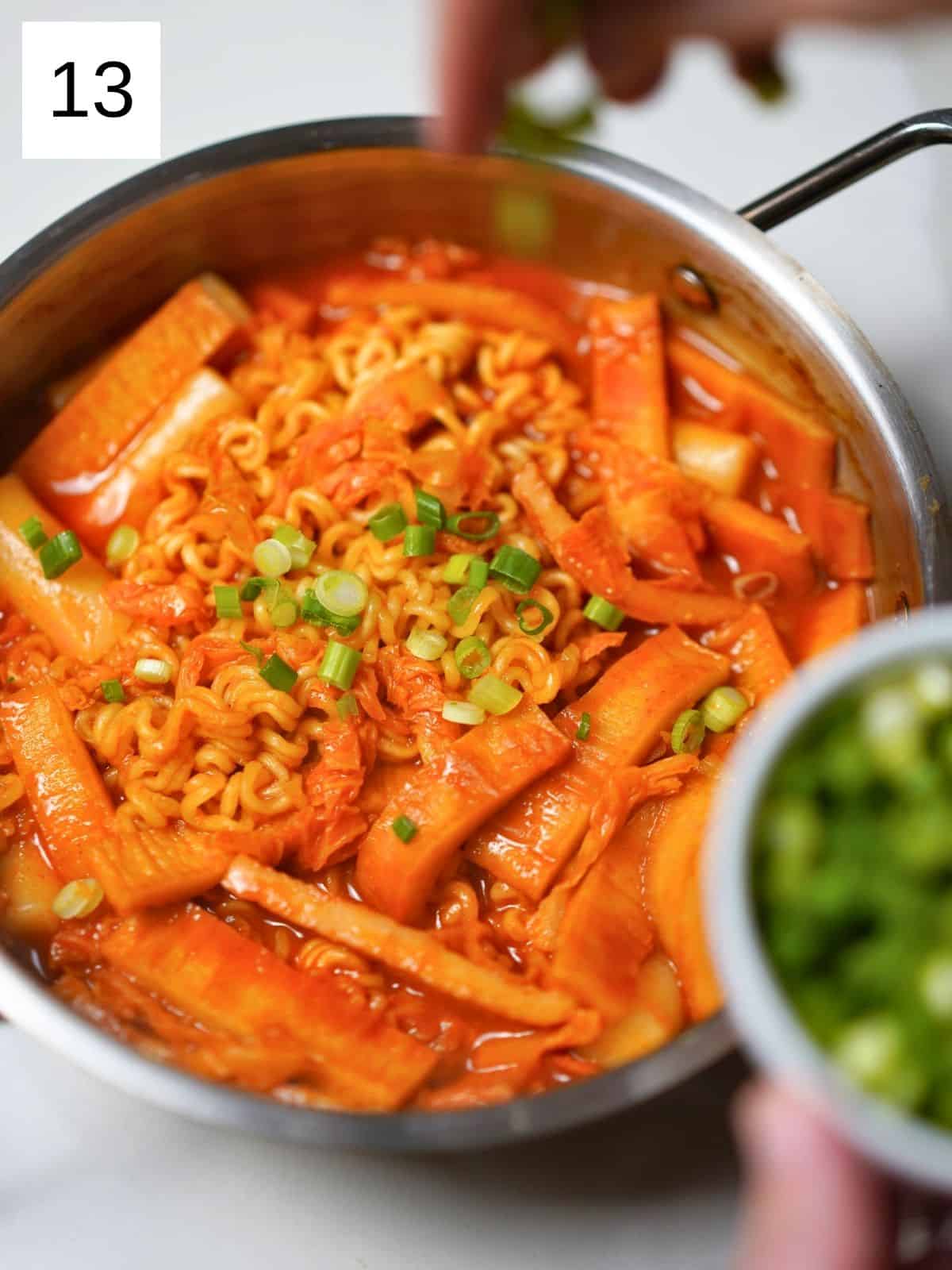
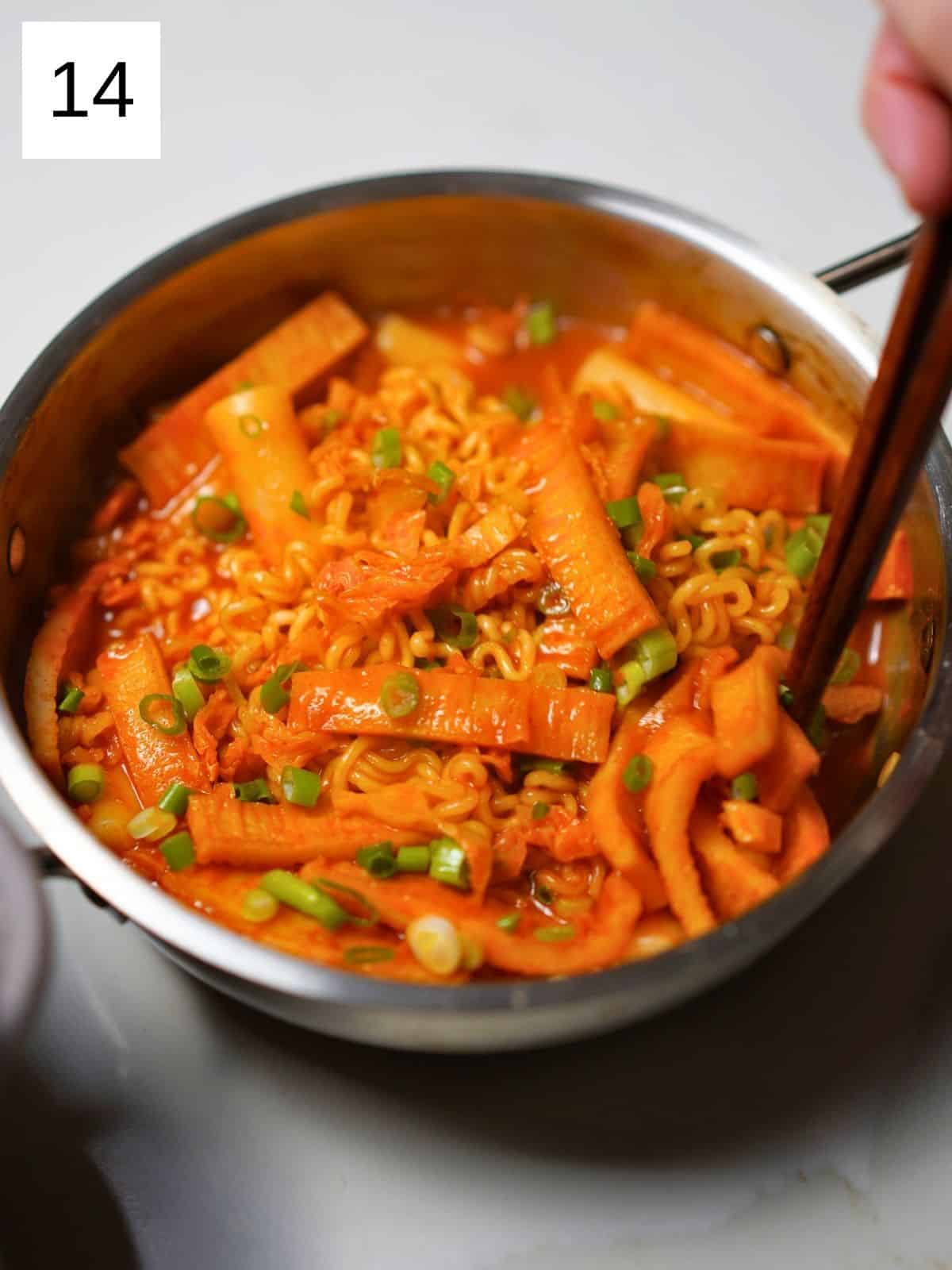
🌟 Variations
- Less Spicy, Kid-Friendly Rabokki - gochujang can be spicy for little ones, so you can use ketchup or tomato paste instead of gochujang, or opt for a smaller amount of level 1 gochujang. You can add other vegetables like carrots and corn to make it more colorful and nutritious.
- Creamy Rabokki - mix in a spoonful of cream cheese or heavy cream at the end to create a creamy sauce. This adds a rich and decadent twist to the dish, similar to my creamy gochujang pasta.
- Vegetables - if you don't have cabbage or want to add more vegetables, you can use other greens like spinach or bok choy, or even diced bell peppers for added crunch and flavor.
- Swapping Protein - aside from fish cakes, you can also use other proteins such as sliced beef or pork, shrimp, tofu, boiled egg, or even canned tuna, like in my tuna fried rice. Just be sure to adjust the cooking time accordingly.
For another flavorful spicy Korean dish, see my gochujang aioli recipe!
🥘 Storage and Reheating
This dish is best enjoyed fresh, but if you have leftovers, store them in an airtight container in the refrigerator for up to 2 days. To reheat, simply microwave, or even better, heat on the stove until warmed through. I highly recommend you do not freeze it.
👨🏻🍳 Expert Notes & Tips
Serving Suggestions: To stretch this dish even further, you can transform it into a more juk-like porridge by adding some leftover rice, and brighten up the flavor with some black sesame seeds and chopped green onion, or cilantro for a more vibrant look.
Reheating: though I always recommend using the stovetop to reheat rabokki, the noodles may become notably softer when reheated. It's best to add fresh noodles before serving, if possible, especially if you initially made a large batch.
🍽 Rabokki Topping Ideas
- pork belly
- bok choy
- spinach
- bean sprouts
- mushrooms
- sprinkle of furikake
- drizzle of sriracha
❓ Other Delicious Recipes With Gochujang
🙋 Frequently Asked Questions
Rabokki can be spicy depending on the amount of gochujang used in the recipe. However, you can adjust the spiciness level by using less or omitting the gochujang altogether, or even substituting it with a non-spicy alternative like ketchup or tomato paste. Feel free to also add more vegetables to balance out the heat.
Tteokbokki and rabokki are both Korean dishes made with rice cakes, but they have slight differences. Tteokbokki is a traditional dish made with gochujang sauce, fish cakes, and vegetables like cabbage, while rabokki also includes instant ramen noodles in the mix.
Yes, you can make rabokki ahead of time and store it in the refrigerator for up to 2 days. To reheat, simply microwave or heat on the stove until warmed through, though consider adding fresh noodles if possible.
📖 Recipe
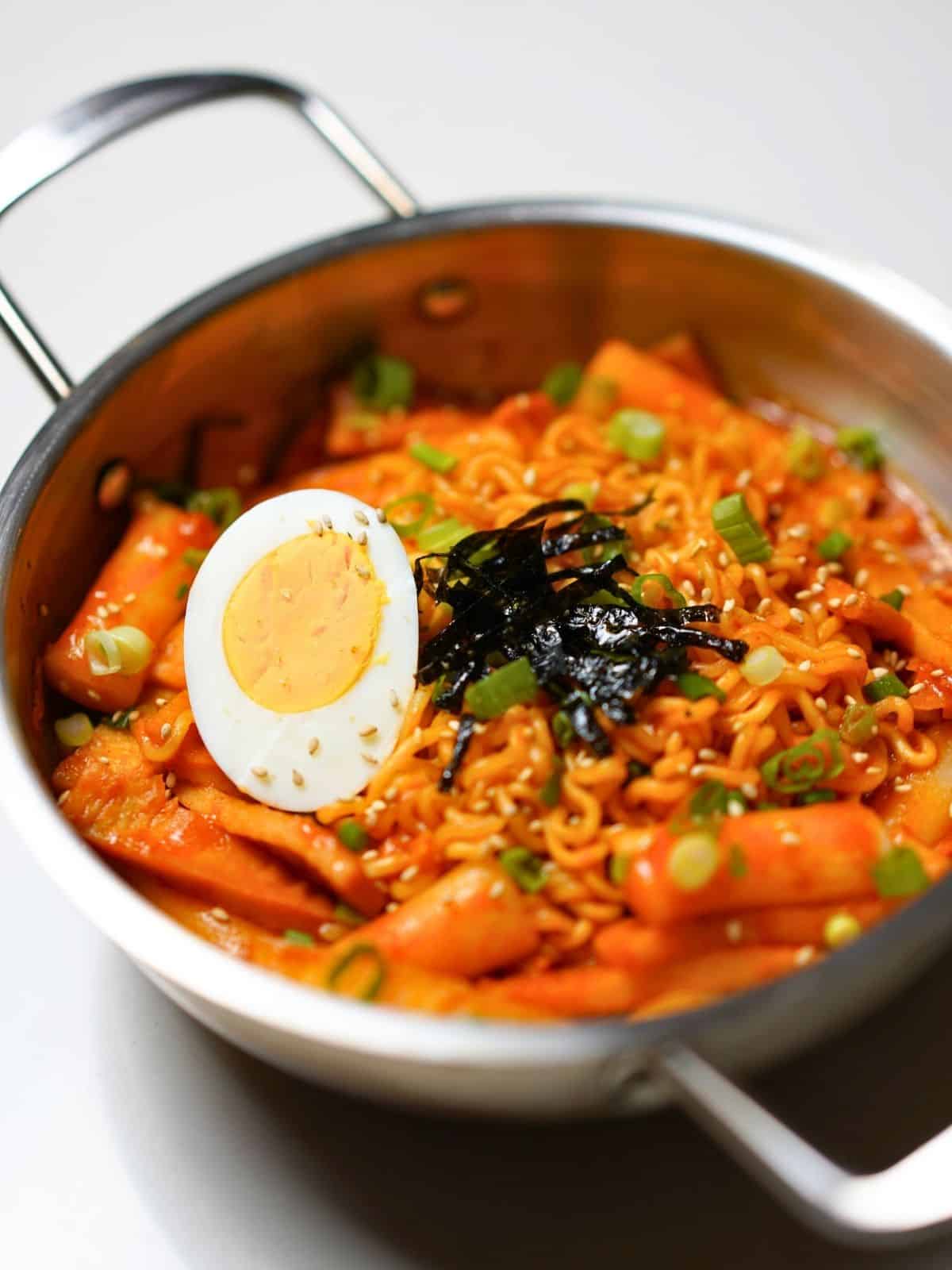
Easy Rabokki Recipe (in 20 Minutes)
Equipment
- deep cooking pan
Ingredients
- 1 cup tteokbokki ddeok glutinous rice cakes
- 2 packets instant ramen noodles only the noodles
- 4 cups water alt. broth or stock for more flavor
- ½ cup gochujang use as little as ¼ cup for less heat
- 1-2 tablespoons honey adjust to taste
- 1 tablespoon soy sauce
- 2 cloves garlic minced (alt. 2 teaspoons garlic paste)
- 1 cup cabbage sliced
- 1 cup precooked fish cakes sliced (about 2 frozen sheets)
- 3 to 4 whole green onions roughly chopped
- 1 boiled egg cut in half (optional)
- ½ cup mozzarella cheese optional, for a cheesy twist
- sesame seeds and seaweed flakes optional, for garnish
Instructions
- Begin by soaking the rice cakes in warm water if they're hard, for about 10 minutes.
- Meanwhile, in a large pan or wok, bring your 4 cups of water or broth to a boil. You’ll be cooking everything in the same pot, but don’t worry; it will reduce by a lot.Once your liquid is boiling, stir in the gochujang, honey, soy sauce, and garlic, whisking until smoothly combined.
- Add the sliced cabbage, and then drain & add the soaked rice cakes & fish cakes to the sauce, simmering until they start to soften (about 5-7 minutes), stirring occasionally.
- Once the rice cakes and fish cakes have softened, add the uncooked ramen noodles (set aside or toss the seasoning packet) and cook for 3-5 more minutes, opting for less time if you prefer your noodles al dente.
- Once the rice cakes are tender and the sauce has thickened, add the chopped green onions to the pan and toss everything together to coat it in the sauce.If you're feeling indulgent, you can sprinkle mozzarella cheese over the top and cover the pan for a minute to let it melt. If not, serve your rabokki hot, ideally garnished with boiled egg halves, a sprinkle of sesame seeds, and seaweed flakes.

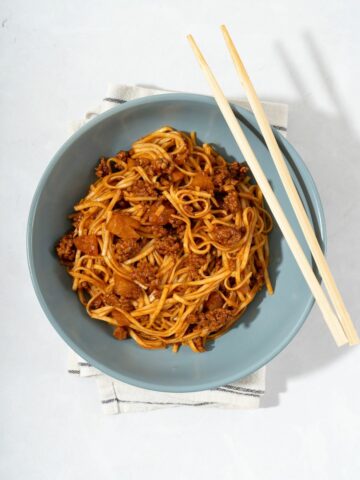
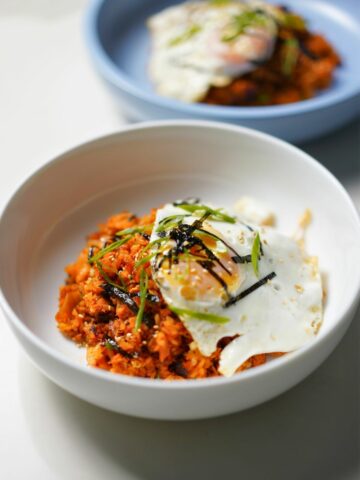
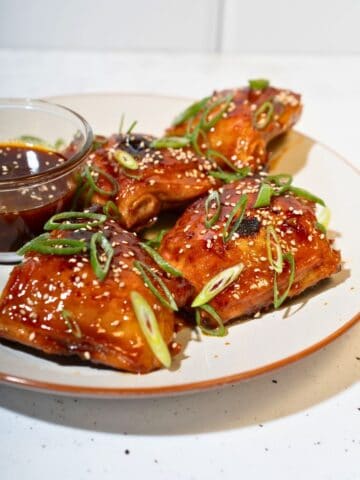
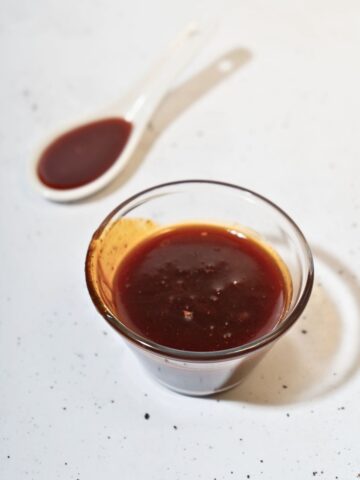

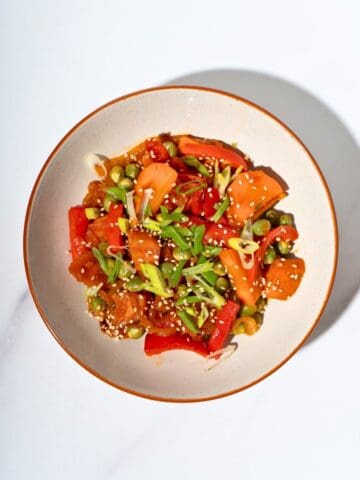
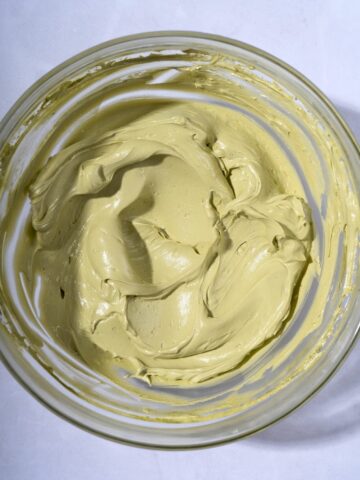
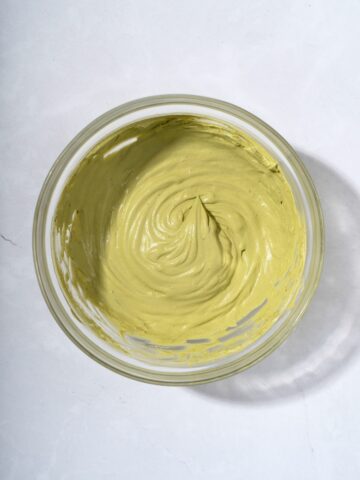
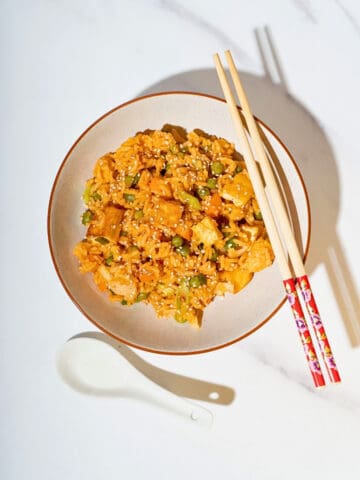
Comments
No Comments